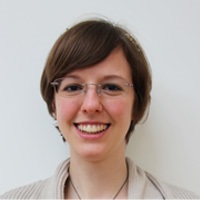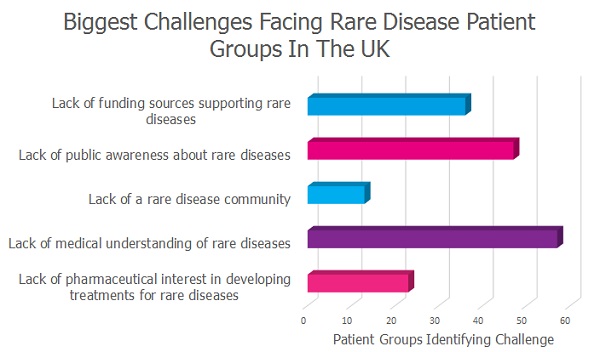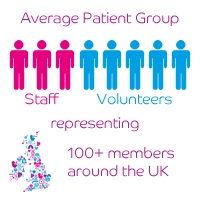Rare disease groups: scaling up from the kitchen table

People wanting to establish rare disease support groups face lack of understanding and awareness from the medical profession, challenges finding others with the same condition, often little funding and no proper training. Flóra Raffai explains what Findacure is doing to help them unite and find their voice.
There are 7,000 rare diseases, affecting 350 million people worldwide. Together, they would form the third most populous country on the planet. In the UK, these conditions collectively affect 6 per cent of the population, or approximately 3.5 million people.1
Yet, of the 7,000 conditions, only 200 have licensed treatments. Patients are often left with low health outcomes, suffering from debilitating diseases, kept from work or being active due to complications. Many people call these rare diseases 'orphan diseases': orphaned from society, orphaned from the medical profession, orphaned from research.

There is a chronic lack of support for rare diseases among the medical profession. Patients experience a diagnosis odyssey, on average spending eight years visiting 10 specialists to receive an accurate diagnosis.2 Even once they have been diagnosed, they face an uphill struggle. In a 2013 study by Shire, 62 per cent of patients stated that they needed to provide their healthcare professionals with information on their disease.3
As a result, patients often turn to patient groups as their main source of information, of community, of empathy, and of support. Researchers also report that patient groups are their first port of call when preparing research to develop treatments and clinical trials. However, Global Genes Project has found that half of the thousands of rare diseases do not even have a disease-specific group.4
To discover the challenges facing rare disease patient groups, Findacure conducted multiple surveys with relevant stakeholders throughout 2014 and in early 2015.
Situation for patient groups
The research found that where patient groups exist, they are usually 'kitchen-table' organisations, set up by people living with rare conditions or who have a family member affected. These patients and advocates face significant barriers and challenges when attempting to establish patient groups.5

The lack of medical understanding of their condition hinders their ability to identify other patients, build a community, and offer accurate health information. In addition, there is a lack of awareness and consequently a lack of funding for running their organisation.
As a result, these organisations are very small, heavily relying on volunteers and with few full-time members of staff. On average, groups have eight people involved, 71 per cent of whom are volunteers (i.e. three members of staff and five volunteers).6 So, although these groups are innovative and entrepreneurial, they are running on a very small scale, and probably do not have the professional capacity to fulfil the multiple services expected of patient groups.
To identify how best to meet the needs of these groups, Findacure conducted a further survey with its beneficiaries. A total of 98 per cent of the respondents7 believed it was critical to provide training to them. It was argued that patients and family members who establish patient groups transfer their skills with no previous experience in the third sector or in healthcare. There is little help available for these people, and they are the ones most in need of a support group.

Meeting need
Findacure aims to meet that need through innovative programmes for rare disease patients and advocates, uniting fragmented and isolated patients in a concerted effort to take control of their diseases and meet the challenges of medical research and drug development. In undertaking this mission, Findacure follows in the footsteps of William Bateson, the father of modern genetics, who reminded us that it is worthwhile to 'treasure our exceptions'.
Since 2013, Findacure has been building the rare disease community to drive research and develop treatments, organising training workshops in areas such as fundraising, how to interact with academics, patient identification and recruitment. In 2014 we organised four workshops, attended by 124 patient group delegates representing more than 62,550 patients across the UK. In feedback, 93 per cent agreed the workshops were relevant to their needs, with 95 per cent reporting increased knowledge and skills.
A pilot peer mentoring scheme was launched in late 2014, recruiting 16 patient groups and expert mentors. As part of this scheme, new patient groups are linked to experienced organisations and experts to nurture the development of key skills and knowledge. Feedback from both mentors and mentees has been positive, with real progress being achieved in a short period of time.
Our most recent project is an easy-to-navigate online resource portal, where patients and advocates can acquire the skills and access tools needed to run their patient groups. We have worked closely with volunteers from established patient communities, international rare disease advocacy organisations, and academic institutions to develop credible and accurate guides for new patient groups. Patients and advocates are able to access free information, connect through moderated forums, and contribute to increasing the collective knowledge of the rare disease community.
By supporting patient groups with our empowerment programmes, we aim to increase the development of individual patient groups, improve support capability, deliver better health outcomes for thousands of patients around the country, diminish stress and isolation for group leaders, and ultimately offer hope by driving research into treatments. In addition, we are working to build the community of rare disease stakeholders, to enable cross-condition collaboration and strengthen the collective voice of these long overlooked conditions.
References
1 Rare Disease UK. 2015. About Rare Diseases. Online. Accessed 8 April 2015.
2 Global Genes Project. RARE Diseases: Facts and Statistics. Online. Accessed 8 April 2015.
3 Shire. 2013. Rare Disease Impact Report: Insight from patients and the medical community. Online. Accessed 8 April 2015.
4 Global Genes Project. RARE Diseases: Facts and Statistics. Online. Accessed 8 April 2015.
5 Results of feedback surveys filled out by 74 patients, advocates, and patient group representatives throughout 2014 and early 2015. Respondents were asked to select all the challenges they experienced setting up and/or running patient groups.
6 Results of survey conducted in January 2015 with 18 additional patient groups.
7 41 responses from patients, carers, patient group representatives, clinicians, pharmaceutical representatives, and researchers.
About the author:
Flóra Raffai is head of development at Findacure. She leads on the charity's patient group training projects, organises engagement with the scientific community, develops charity strategy and oversees major funding applications and online communications.
Flóra graduated from the London School of Economics with a BSc (hons) in International Relations. She is a founding member of the Cambridge Rare Diseases Network and volunteers as co-organiser for the Cambridge Chapter of Good for Nothing.
Read more on rare diseases:



